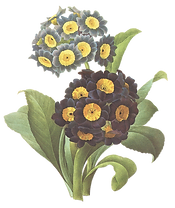Grow in the Dark
- Cynthia Thomas
- Nov 7, 2017
- 4 min read
Visiting long lost cousins in Michigan this past summer, I was given little hairy seedpods from the homeplace my mom romped around as a young girl. After admiring the tall, blue spikes of her pea-like flowers, my cousin Pam broke off the lupine pods and told me I should plant them in the fall.
The hardest part was not forgetting where or what they were.
The easiest part was sowing the untreated seeds directly in the ground last week. Like many annuals that self-sow, and as a result become essentially perennials in the garden, lupine seeds are a great way to fill out your garden when it starts to go to sleep in the fall. Sweet pea, sweet alyssum, candytuft and gallardia (blanket flowers) are all cool loving annuals that can fill in holes in your garden in late autumn or during winter in warm climates.

The seeds may take several months to germinate, and like the natural cycle of life, emerge as plants the following spring. Oftentimes we don’t think about “sowing” in these months of limited light. We are busy digging out sweaters and not thinking about digging in the ground.
And isn’t that a lot like life? Out of sight - out of mind. We tend to focus on what we see and overlook what's under the surface?
Seeds, however, often require this season of dormancy. With their tight little jackets on, they're prepared for the cold, dark months of winter. In fact, they need to be buried to experience new life. Seasoned gardeners will even practice "stratification" - the process of treating stored or collected seed prior to sowing to simulate natural winter conditions that a seed must endure before germination.
As I dig out the clover that's taken over a little corner of the garden and prepare a place for my gifted seeds, I am reminded of dreams and prayers I've seen go dormant. Perhaps this lesson of stratification is not merely for the flowers. Perhaps I would do well to remember the same God who causes the seed to come to life doesn't stop working when it's dark.
Actual germination time is not up to me. It depends on moisture availability, ground temperature, and elements out of my control. The lesson of the seed is the lesson of faith. In Hebrews 11 we read: "Now faith is the assurance of things hoped for, the evidence of things not seen." Once the seed is sown, it's God's job to cause it to grow and my job to believe he will do it.
Knowing this, gardeners can take advantage by planting the seeds right when the ground is receptive for new seeds, which can be before or after frost. However, this depends on the local weather too. For areas that are particularly cold, it is best to start planting when it started to frost, but for areas that do not freeze, hardy wildflower seeds can be planted in the winter.
Garden flower seeds that are sown in the fall also tend to have a higher rate of germination then those sown in the late winter or spring.
Popular flower seeds for fall planting:
Alyssum Basket of Gold Seeds
Ameria Formosa Seeds (as late as 2 mos. before first frost)
Bachelor Button Seeds (in warm climates)
Bee Balm Seeds (as late as 2 mos. before first frost)
Black Eyed Susan Seeds (as late as 2 mos. before first frost)
Blue Flax Seeds (as late as 2 mos. before first frost)
Calendula Seeds (in warm climates)
Chinese Lantern Seeds (as late as 2 mos. before first frost)
Columbine Seeds (as late as 2 mos. before first frost)
Coreopsis Seeds (as late as 2 mos. before first frost)
Cupid's Darts Seeds (in mild climates)
Daisy, Painted Seeds (as late as 2 mos. before first frost)
Delphinium Seeds (as late as 2 mos. before first frost)
Echinacea Seeds (as late as 2 mos. before first frost)
Forget-Me-Not Seeds
Foxglove Seeds (as late as 2 mos. before first frost)
Gaillardia Seeds (as late as 2 mos. before first frost)
Love-In-A-Mist Seeds (in warm climates)
Lobelia Seeds (in mild climates)
Lavender Seeds
Lady's Mantle Seeds (as late as 2 mos. before first frost)
Nasturtium Seeds (In warm climates)
Pansy Seeds (in warm climates)
Penstemon Seeds (as late as 2 mos. before first frost)
Pony Tail Grass Seeds
Prairie Coneflower Seeds (as late as 2 mos. before first frost)
Scabiosa Seeds (as late as 6 wks. before first frost)
Snapdragons Seeds (in warm climates)
Sweet Pea Seeds (Oct - Jan in warm climates)
Viola Seeds (in warm climates)
Virginia Stocks Seeds (in mild climates)

Wallflower Seeds (as late as 2 mos. before first frost)
Don’t be concerned if you don’t see seedlings this fall. Seedlings may come before winter, but most will wait till spring before they sprout. If you do see seedlings this fall, mulching them over the winter is a way to help ensure their survival. Wait until the ground freezes before you mulch them.
And what greater proof is there, that there is hope then to see that little plant emerge in the spring? Sure, you have to prepare the soil and plant the seed, but none of us can take credit for the growth. It’s simply the miracle that reminds us that life emerges from death; that out of sight is actually the bed where faith is grown.























Comments